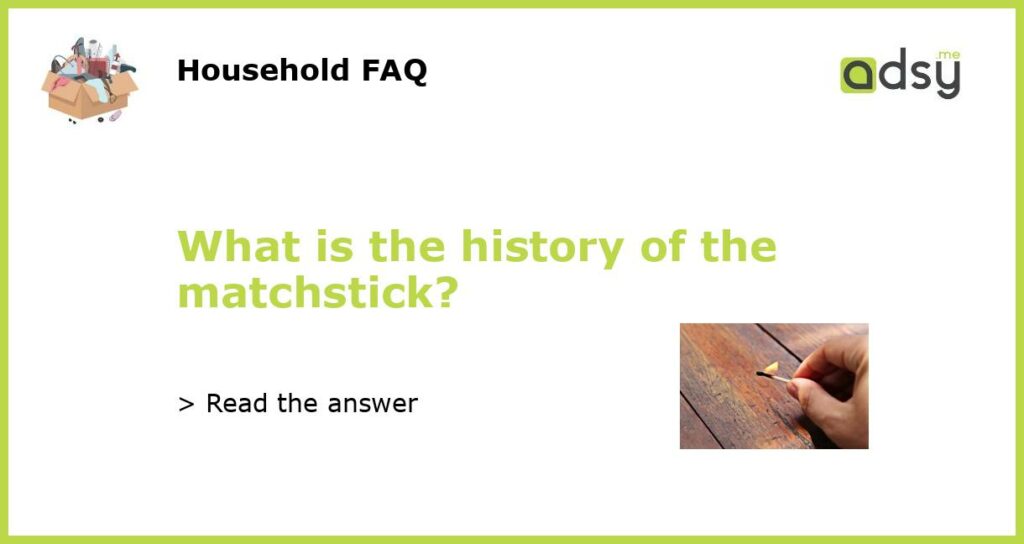The Origins of the Matchstick
The matchstick was invented in the early 19th century as a safer and more convenient way to start fires. Before the matchstick, people used flint and steel or lit fires from embers. However, these methods were often dangerous and difficult. It wasn’t until the invention of the matchstick that starting fires became much easier and safer.
Early Types of Matchsticks
The first matchsticks were made of wood and dipped in a mixture of sulfur and potassium chlorate. They were known as “strike-anywhere” matches and were highly flammable. These early matchsticks were dangerous due to their tendency to catch fire easily and accidentally.
The Safety Match
In 1855, a Swedish chemist named Johan Edvard Lundström invented the safety match, also known as the “strike-on-box” match. Instead of containing the flammable mixture on the matchstick itself, the safety match had the chemicals on the box. When struck, the matchstick would ignite and light the chemicals on the box, creating a safer and more controlled flame.
Advancements in Matchstick Technology
Throughout the years, the matchstick has undergone several improvements. In the 1890s, the striker pad was added to the matchbox, making it easier to light a match. In the 1960s, the “book match” was invented, which featured a folding cardboard cover that opened to reveal a row of matches, making them easier to carry and store.
Matchsticks Today
Today, matchsticks are still widely used for lighting candles, cigarettes, and fires. However, with the rise of electronic devices, the use of matchsticks has declined. But despite the convenience of other methods, the matchstick remains a useful tool and a symbol of fire-making technology throughout history.






